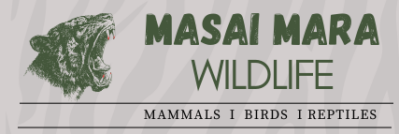- Common Names: Klipspringer, Mbuzi mawe (Swahili), Enkine Oosoito (Maasai)
- Scientific Name: Oreotragus oreotragus
- Size:
- Head-Body Length: 125 cm (49 inches)
- Shoulder Height: 60 cm (24 inches)
- Gestation: 30 weeks
- IUCN Status: Least Concern, with stable populations, though localized declines may occur due to habitat loss and human activity.
Recognition and Appearance
The Klipspringer is a small, stocky antelope, instantly recognizable by its dark grey-olive coat and short, spiky horns (present in both sexes). Their large, rounded ears feature distinctive inner markings that help in identifying them. Their coat has a coarse texture, which provides insulation and protection while living in rocky environments.
What is most striking about the Klipspringer is its unique adaptation to its rocky habitat. They walk on the very tips of their hooves, allowing them to balance on rocks as small as an adult’s fist. This provides excellent grip on rocky terrain, making them exceptional climbers.
Habits and Behavior
Klipspringers are typically found in pairs or small family groups, moving quietly across rocky outcrops and scree. While one animal feeds, another keeps watch, ready to sound an alarm with a high-pitched whistle at the first sign of danger. This cooperative behavior helps them remain alert and safe from predators like leopards and large eagles, which often target them in their elevated habitats.
They are territorial animals and are known to defend their rocky homes vigorously from intruders. Territories are often shared between monogamous pairs, which will remain together for life.
Diet and Feeding Habits
Klipspringers feed on a variety of grasses, herbs, and succulent plants, which provide them with all the water they need, making them water-independent. This allows them to thrive in environments with little to no standing water.
Where to Find
In the Masai Mara, Klipspringers are primarily found on the Oloololo Escarpment and other rocky outcrops, where they expertly navigate the rugged terrain. Their preference for rocky habitats helps them evade predators and maintain a safe, high-ground lifestyle.
Conservation Status
The IUCN lists Klipspringer as Least Concern, due to their broad distribution across sub-Saharan Africa and relatively stable populations. However, habitat loss from expanding human settlements and agricultural activities pose a local threat to certain populations. Conservation efforts focusing on protecting rocky outcrops and natural habitats are essential for ensuring their long-term survival.
Interesting Facts
- The name Klipspringer means “rock-jumper” in Afrikaans, reflecting their incredible agility on rocky terrain.
- Their unique hoof structure allows them to stand on the very tips of their hooves, giving them remarkable balance and precision when moving over steep or jagged rocks.
- Pairs are highly territorial, and both the male and female take turns guarding their small home ranges.
The Klipspringer is a fascinating example of a species that has adapted perfectly to its niche, thriving in environments that are harsh and often inaccessible to other animals. Their agile movements, territorial behaviors, and cooperative nature make them a wonderful species to observe on a safari in the Masai Mara!
